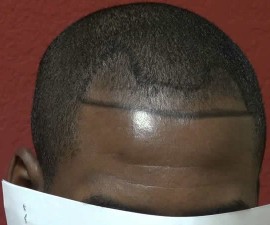… Continued …
Actually, again the treatment is usually unnecessary because the problem is commonly considered harmless. This is particularly true if you are still comfortable with your appearance. In fact, baldness is not always bad.
The good news, there are many hairstyles that can help boost your appearance even though you have thinning hair. This can be safest approach and least expensive option for coping.
Even some men with receding hairline or baldness take more attention. You can try following hairstyles of some actors such as Vin Diesel, Guy Ritchie, Freddie Ljungberg, or Daniel Craig.
But if you do find that it is very embarrassing or if you decide to treat it, some treatments are available. These include non-surgical treatment (such as Rogaine ‘Minoxidil’ and Propecia ‘Finasteride’) or surgical treatment (such as hair transplant).
Both Rogaine and Propecia are approved to treat MBP. But when it comes to receding hairline, propecia is more recommended. Because propecia can help address and control dihydrotestosterone! However, both treatments cannot provide permanent result. You need to continuously take the treatment, otherwise the problem may return.
Hair transplant is more expensive treatment option. But it often works successfully in treating MPB, and may also provide permanent result.
The key of hair transplant is to find and use a stable donor site for transplantation. Therefore, the age of when you take the treatment is crucial. It is commonly not recommended if you are still too young!
Some lifestyle measures may also help for coping, especially true if there are also some lifestyle /environmental factors involved. Looking for more guidance? See also this complete guide to cope with receding hairline.
- http://ghr.nlm.nih.gov/condition/androgenetic-alopecia
- https://www.nlm.nih.gov/medlineplus/ency/article/001177.htm




